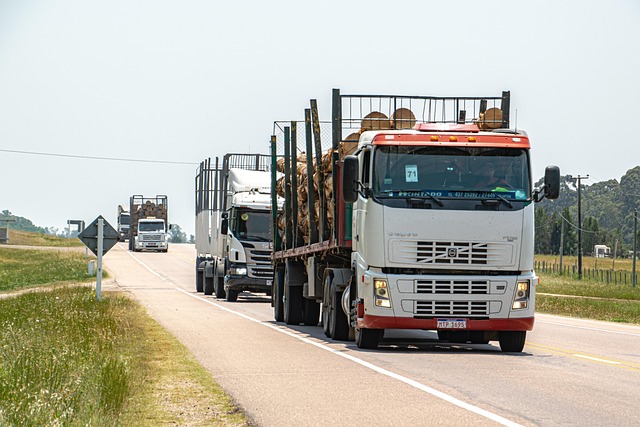“Looking to register your car in California? Our comprehensive guide breaks down the process step-by-step. From understanding key requirements to gathering essential documents, this article ensures you’re prepared. Learn how to visit a DMV or utilize online services efficiently. Discover the importance of a Vehicle Identification Number (VIN) verification for accuracy. Additionally, we outline registration fees and plate issuance. Ensure a smooth car registration experience with our expert tips using trusted dmv vin verifier tools.”
- Understand California Car Registration Requirements
- Gather Necessary Documents for Registration
- Visit a DMV or Use Online Services for Registration
- Perform a Vehicle Identification Number (VIN) Verification
- Pay Registration Fees and Receive Your Plate
Understand California Car Registration Requirements

Before registering your car in California, it’s crucial to understand the state’s specific requirements. The California Department of Motor Vehicles (DMV) mandates that all vehicles operated within the state be properly registered and have a valid inspection certificate. This process involves several steps, including verifying the vehicle identification number (VIN) through a reliable source like the DMV’s online system or a mobile VIN verifier.
A key component of the registration process is ensuring your car meets safety and emissions standards. This often requires a thorough inspection conducted by an authorized facility. For added convenience, many services now offer mobile VIN inspections, allowing you to validate your vehicle’s details from the comfort of your home or office. By adhering to these requirements and utilizing tools like a DMV VIN verifier or mobile vin inspector, you’ll streamline the car registration process in California.
Gather Necessary Documents for Registration

Before you start the registration process, make sure to gather all the essential documents required by the California Department of Motor Vehicles (DMV). This includes your vehicle’s title, which can be obtained from the DMV or a reputable car dealer. You’ll also need proof of insurance, and a valid driver’s license or state ID card. The Vehicle Identification Number (VIN) is another critical piece of information, which can be quickly verified using a mobile VIN verifier or by visiting the DMV for an inspection. This number uniquely identifies your vehicle, ensuring accurate registration and title transfer.
Additionally, have handy any previous registration records or documents related to ownership history. These will help streamline the registration process at the DMV. Remember, having all these documents ready ensures a smooth and efficient transaction when you visit a California DMV location for car registration.
Visit a DMV or Use Online Services for Registration

In California, registering your car involves a trip to either the Department of Motor Vehicles (DMV) or utilizing their online services. For those who prefer a more traditional approach, visiting a DMV field office is the first step in the registration process. You’ll need to bring along essential documents and proof of insurance. The staff at the DMV can guide you through completing the required forms, which include providing your vehicle’s Vehicle Identification Number (VIN) for verification purposes. A VIN verifier, often available as a mobile vin verification tool, is used to check the vehicle’s history and ensure it’s not stolen or has any outstanding issues.
Alternatively, California’s DMV offers a convenient online registration option. This digital process streamlines everything from filling out forms to paying fees. You’ll still need your VIN, which can be quickly obtained through a mobile vin inspector, to input into the system during the registration. Online registration is not only time-saving but also allows you to avoid the often busy and crowded DMV offices, making it a popular choice for many California drivers.
Perform a Vehicle Identification Number (VIN) Verification

Before you begin the registration process, it’s crucial to perform a Vehicle Identification Number (VIN) verification. This step is essential for ensuring that your car is legitimate and not stolen or part of any legal issues. You can easily verify the VIN by using a mobile vin verifier or even a simple online tool provided by the DMV. Simply input your vehicle’s unique 17-character VIN code, and you’ll receive instant validation about its history and authenticity.
For those who prefer a more hands-on approach, a mobile vin inspection is also an option. Many professional services offer this on-site, allowing you to get a comprehensive report on your car’s past in minutes. This can be particularly beneficial if you’re purchasing a used vehicle, as it provides peace of mind and helps avoid any potential pitfalls during registration at the DMV.
Pay Registration Fees and Receive Your Plate

After confirming your vehicle’s eligibility for registration, it’s time to pay the required fees. The California DMV offers several payment options, including online, by phone, or in-person at a local field office. The cost of registration varies depending on your vehicle type and age, so make sure you have the correct amount ready. During the payment process, you’ll receive a unique Vehicle Identification Number (VIN) verifier code from the DMV. This code is crucial for the next step.
Once registered, you can claim your custom license plate. The DMV will provide instructions on how to pick up your plates at a designated location or have them delivered to your home. Your new plates will display your VIN and unique identifier, ensuring your vehicle’s authenticity. As an added convenience, many customers opt for the mobile vin verification process, allowing for an even smoother registration experience without having to visit a DMV field office.
Registering your car in California involves understanding state requirements, gathering essential documents, and completing a simple process. By visiting a DMV or using online services, you can efficiently register your vehicle. A crucial step is performing a Vehicle Identification Number (VIN) verification, ensuring the accuracy of your car’s details. Once validated, pay the registration fees, receive your unique license plate, and enjoy the road with peace of mind. Remember to keep your documents up-to-date for seamless future registrations, and consider using a trusted DMV VIN verifier for convenience.
